The 5 best neoprene shoes for winter
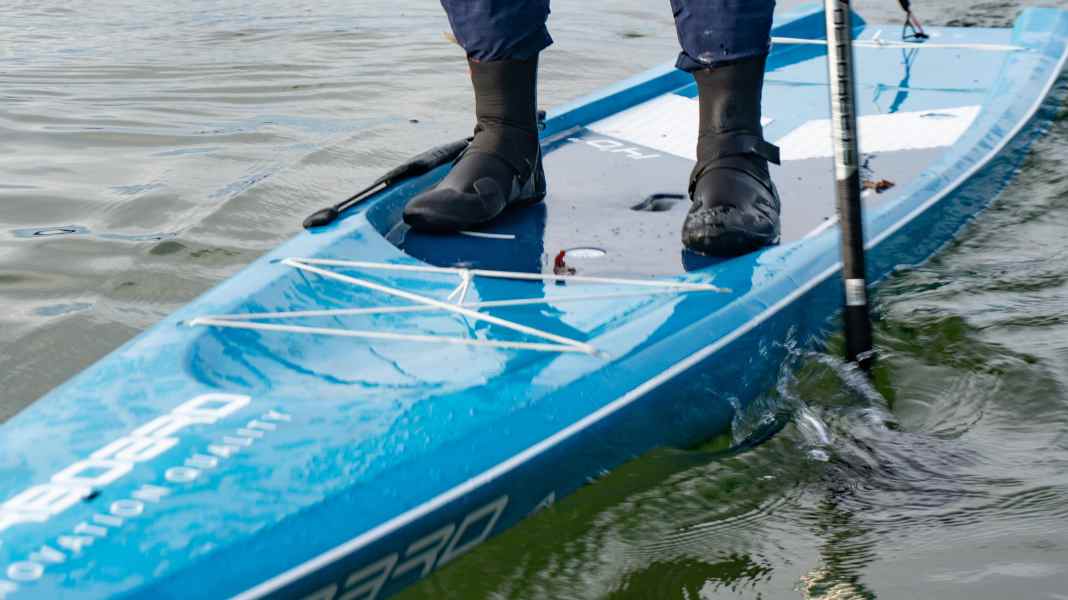
The body has warmed up, the feet have stayed cold - Unfortunately, this is how many paddlers feel after a short time in the cold winter months. While you can easily keep your body warm and dry with the right clothing, your feet - sometimes surrounded by icy water - can quickly become frosty. surf Magazin compared the best models for windsurfers among the neoprene boots available from specialist retailers in issue 1-2/2021. Here is the ranking for SUP, which is slightly different due to the different requirements (windsurfers, for example, stand in foot straps and tend to need more sensitivity in the sole). This type of shoe is particularly suitable for paddlers who want to retain board feel even in winter and don't want to rely on thick "boots".
Three tips for even more warmth apply to every shoe:
1. costs not much-Insoles with insulation and aluminium foil - if the size of the shoe allows it. The worst cold bridge is usually the sole.
2. costs nothing - and is perhaps the most effective tip: flat-water paddlers look for a dry entry point on the jetty or similar. Wet neoprene shoes are always much colder than completely dry ones, even if you've only been through the water for a short time. "Your feet stay warm for an hour and a half," says extreme winter paddler Arnd Dünzinger from Grainau." Even in winter, he prefers to use a thick inflatable board instead of a lower race board to keep his feet dry and "higher up".
3. also free of charge: Choose larger shoes for winter so that there is still room for (waterproof) socks or an additional insole.
Here come theTop five for the paddlera total of eight models were selected for surf in the current issue (on newsstands from 16 December) "hot-cold" tested.
5th place: ION Plasma Boot
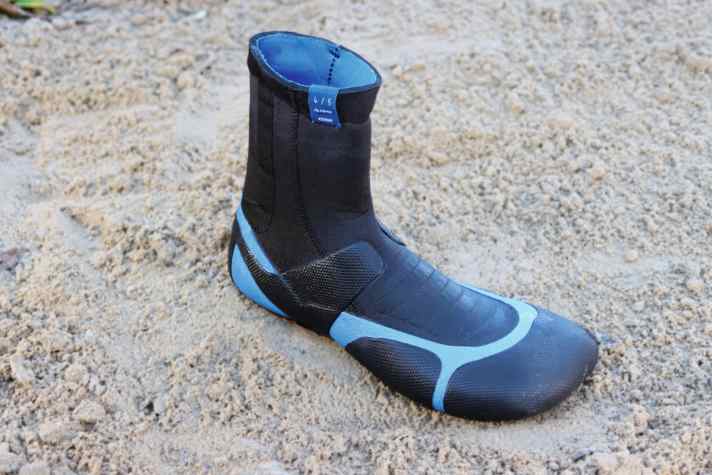
Comfortable shoe with a neoprene thickness of six millimetres and no fancy gimmicks. Good fit on the foot even without Velcro thanks to neoprene bonding on the instep. Doubled up toe area, moderately thick sole and tight seams - this ensures good but not outstanding thermal insulation when paddling. Soft neoprene on the shaft with good step-in comfort. All in all, the Plasma Boot combines high wearing comfort with good protection against the cold down to water temperatures of 4-6 degrees.
Price: 69,99 Euro >> available here

4th place: Ascan Titan
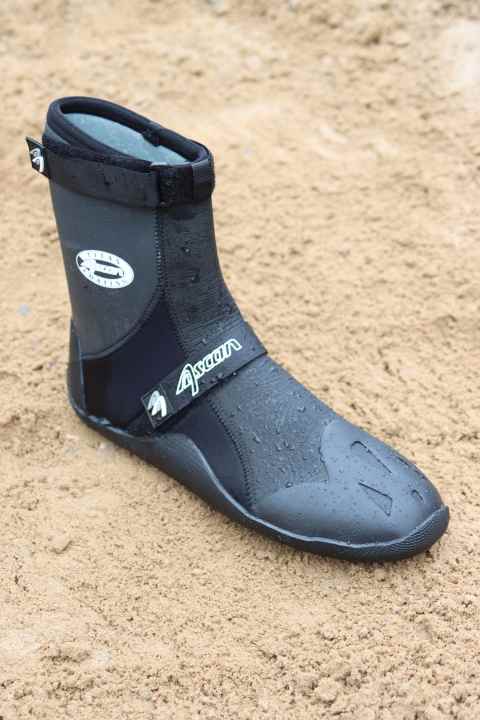
Ascan's affordable winter boot has remained unchanged for years. Although it doesn't have the "fancy" features of other boots, the fact that it is still highly recommended for winter paddlers is mainly due to the full seven millimetres of neoprene thickness and, above all, the above-average thickness and firm sole, which provides a perfect insulating layer against the cold water. Of course, the Ascan Titan doesn't come close to the comfort of the competition, which you can probably get over when you pull your steaming feet out of the shoe after an extended tour. The price is also extremely attractive, with the Titan costing just 39.90 euros.
Price: 52,90 Euro >> available here

3rd place: XCEL Drylock
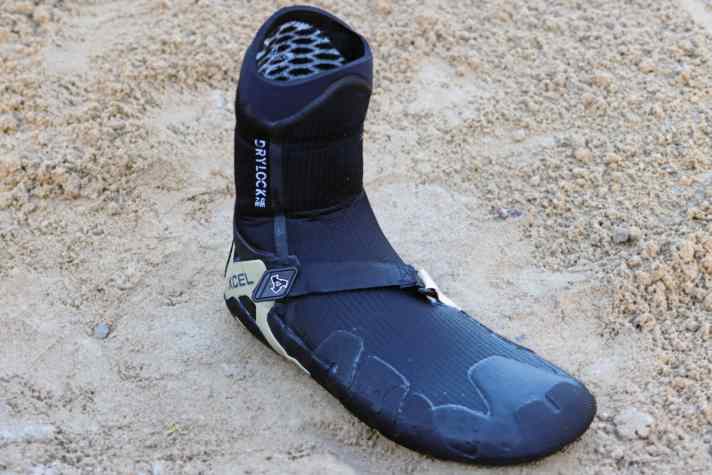
With the Drylock Round Toe, US manufacturer XCEL not only offers a very thick but also extremely high-quality winter boot. Entry is comparatively easy thanks to the very stretchy material on the shaft, while a cosy lining on the inside not only ensures a high level of comfort, but also good thermal insulation in combination with a full seven millimetres of neoprene thickness. Other good features: The neoprene is doubled up in the toe area and the webbing on the instep also ensures a good hold and looks solid to boot. The only reason why the XCEL Drylock is not even further ahead is that the sole is slightly thinner in comparison - this provides an almost "barefoot feeling", but slightly reduces the thermal insulation at a high level.
Price: 85 Euro >> available here

2nd place: Solite Custom Pro
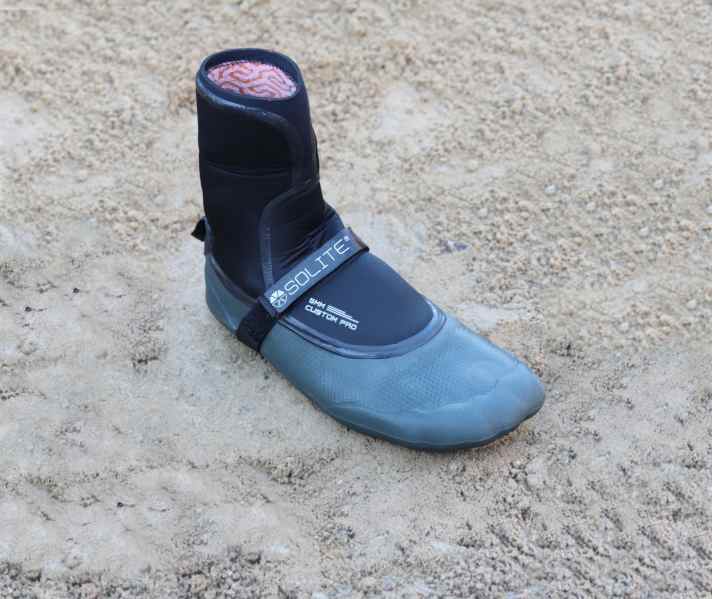
Fancy a cup of tea? If not, you can use the boiling water directly to "costumise" your surf boots, i.e. to customise them. What sounds like a bad joke is actually possible with the Solite boots from the USA. The upper part of the boot looks like a normal surf shoe, while below the ankle the boot is made of a somewhat firmer material that is more reminiscent of a rubber boot. To fit the boot, fill it a good five centimetres high with boiling water and leave it to soak for just under ten minutes. Then pour out the hot water, give it a quick cold rinse, put it in the still-warm shoe and walk around in it. Because you should buy the boot half a size too small, it will initially pinch a little, but the now warm and therefore mouldable material quickly adapts to the shape of your foot and stays that way once it has cooled down. Because the rubber-like material is not quite as warm in the lower area, a thin sock is supplied to wear underneath, which you should wear when customising and of course on the water - thanks to this, you can slip into the boot easily and with little friction. The cosy plush reaches up to the ankle, below which the foot is covered in "naked" rubber. For this reason, you should wear the socks supplied to avoid cold bridges. In the same neoprene thickness, the Solite boot would be slightly less warm, but because the boot is available with a full eight millimetres of neoprene thickness, this shortcoming is more than compensated for. The lightweight boot is also equipped with a solid and extremely grippy sole, which ensures the best grip on the board. The seams are flexible and the stretchy shaft tapers at the top to minimise water ingress.
Price: 85 Euro >> available here

1st place: Patagonia R4
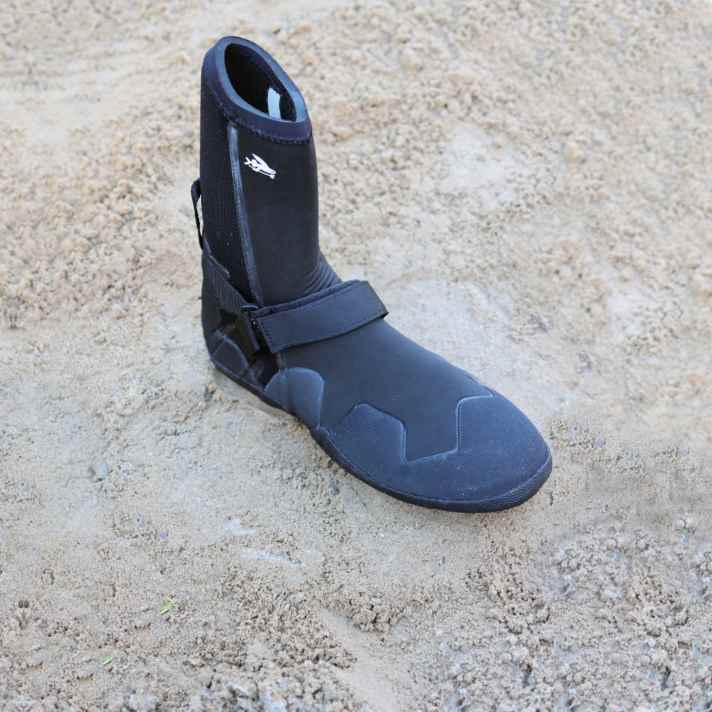
Patagonia consistently favours the use of natural Katschuk, recycled components and water-based adhesives. The stated 5mm is definitely an understatement, the R4 is 1-2 millimetres thicker and therefore easily establishes itself among the absolute warmest models. The entry is quite narrow and somewhat stiff, but once inside, your feet are caressed by soft, cosy plush. The webbing looks high quality, making it easy to tighten the boot and the seams are also perfectly tight. In terms of thermal insulation, the R4 is already the benchmark, the comfort range only ends at around 3-5 degrees water temperature. If that's not enough, you can upgrade to the R5 with 7mm neoprene thickness.

